Taft Dragon Boot Review – Does It Live Up to the Hype?
This boot has been discontinued — check out my review of its successor, the Taft Dragon 2.0!
Taft is a direct-to-consumer footwear company that was founded in 2013 by Kory and Mallory Stevens. In less than three years, the two of them bootstrapped their company to considerable success — a 2017 Forbes profile put the company’s value at $15 million, with 30,000 customers and annual revenue of $5 million. The boots are made in Europe with European leathers and they’re sold exclusively online, which means their products can be cheaper than their competitors.
Their signature product is the Jack boot, an unusual number with an wool upper, but when deciding on a Taft boot to review I immediately knew that I had to try out the Dragon boot. This is a really important boot for the brand because it’s their first with a Goodyear welt, seen by many as a hallmark of high quality shoes. In other words, the Dragon boot can be seen as a sign of the brand growing up. A boot company’s first Goodyear welt is a big deal, and it needs to work just right.
So did Taft hit the mark? The Dragon comes in two varieties, Coffee and Rust. Rust is far and away the most popular, so I decided to take it for a spin.
[Buy the Taft Dragon Boot here!]
Taft Dragon Boot First Impressions
The Rust boot is a hardy, waxed suede that somehow looks more refined and more durable than your standard suede. It’s slick, which isn’t a word I’d normally use to describe a suede boot, but it’s got a slim silhouette that’s enhanced by the slightly pointed toe cap, which does make it look… well, not formal, but definitely dressier than most of the suede boots I’ve seen. The silhouette dresses it up while the suede keeps it from being too formal. It’s a really distinctive boot that’s subtle, yet draws the eye. It just works; I love the way this shoe looks.
The sole is Dainite and pretty much identical to the one you’ll find on the Higgins Mill and many other boots. It’s studded rubber but when viewed from the side, it’s not ostentatious or chunky like a Commando sole and it doesn’t infringe on the shoe’s slim profile. Of course, it’s secured to the upper with that all-important Goodyear welt, but the welt is — and I know I’m using this word a little too much — subtle. Some models have huge, chunky Goodyear welts, but not the Dragon.
I dig the color palate. The leather is a golden brown that’s complemented by aged gold eyelets and a very smooth, light tan calfskin leather lining. There’s a little bit of skiving on the inside, but nothing to be too upset about. Indeed, the quality control is top notch: there were no loose threads and the construction feels really solid. I’ve tried a few Taft boots before and some, like the Chelsea, I really didn’t like as far as construction goes. The Dragon is sturdy, from the sole to the welting to the leather itself.

Taft Dragon Boot Leather
- Waxed suede
- Durable “Waxy Commander” leather from CF Stead
- Coffee version is made from kudu
This is some seriously sexy suede. Personally, I’ve never loved suede — I just find it usually looks unrefined, and I simply don’t like the idea of wearing fuzzy boots. This suede is different.
The Rust’s leather is produced by CF Stead, a tannery in Leeds that’s super well known for the quality of their suede. (Note that while most of Taft’s boots are made in Spain, the Dragon is hand cut and stitched in Portugal with leather flown in from England.) This particular variety is called the Waxy Commander leather, a waxed suede that’s made with cape butt tannage. That’s the a process during which the natural fiber structure is drawn together to produce this traditional “buck” suede look with a napped finish that looks rustic and is very hard wearing.
CF Stead has said this is their strongest wearing suede, and I believe them: over weeks of wear, my boots barely picked up any scratches at all. This stuff is durable. It’s dry in character but it feels very firm, plus it ‘s waterproof, which is a nice touch.
Note that on Taft’s site, there’s a big chunk of text next to the Dragon boot in Rust that talks about the fact that they only use full grain, vegetable tanned leather. That’s true of the Coffee boot, but there’s no such thing as full grain suede.
If you did happen to have picked up the Coffee boot, that’s made from kudu, a kind of antelope, and the toe cap and counter are calfskin, so there’s a bit of contrast between those different areas of the boot. (Contrasting toe caps is kind of Taft’s thing.) The Rust doesn’t have that contrast; it’s the same suede all the way around the boot.
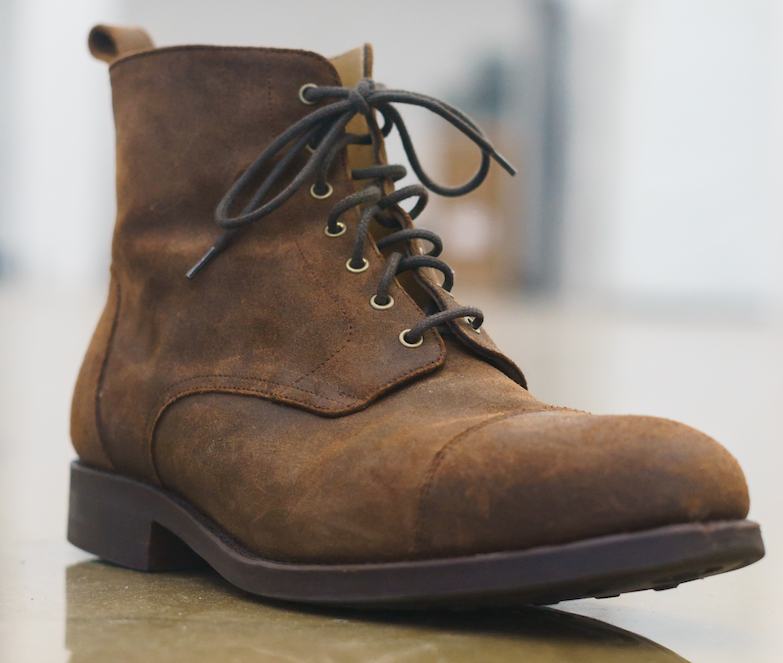
Taft Dragon Boot Leather Care
- Suede is fully waterproof
- Clean with suede brush
- Condition with Spingyard Leather Wax Formula
This is a waxed, waterproof leather, so there’s no real need to pile on anything to waterproof it. It’s also got a Goodyear welt which is very water resistant, so you don’t need to worry too much about taking these out in wet weather. The welt is technically water resistant and not waterproof, but that just means you don’t want to stand in a pond fishing while decked out in your Dragons. For just about any weather above ground, these should keep your toes dry.
When it comes time to clean your suede, you just need a soft brush or, ideally, a suede brush. If they’re really grimy you can use warm water and a cloth, just remember to let it dry in a well-ventilated location at ambient temperature.
You’ll want to condition these boots every few months or so and it’s also not a bad idea to condition them after you brush or wipe them clean, because you might knock off some of the wax. Taft has a cool feature on their website where you can lob questions at a customer service representative in a chat box, and I sent plenty to a lady called Nadia.
One thing that I liked is that unlike some brands, Taft happily recommended the brands they liked for conditioning the leather. For the Rust, it’s Springyard Leather Wax Formula. That can be a little tough to find online, so if you want an alternative you can use something like Otter Wax Boot Wax. The important thing is that you choose a waterproof wax so you can maintain the proofing on the suede. Prefer to use an oil/wax blend like Obenauf’s? You can, just remember that it’ll probably darken the leather.
Finally, if you picked up the Coffee boots, they recommend Griffin’s Leather Conditioner and Restorer.
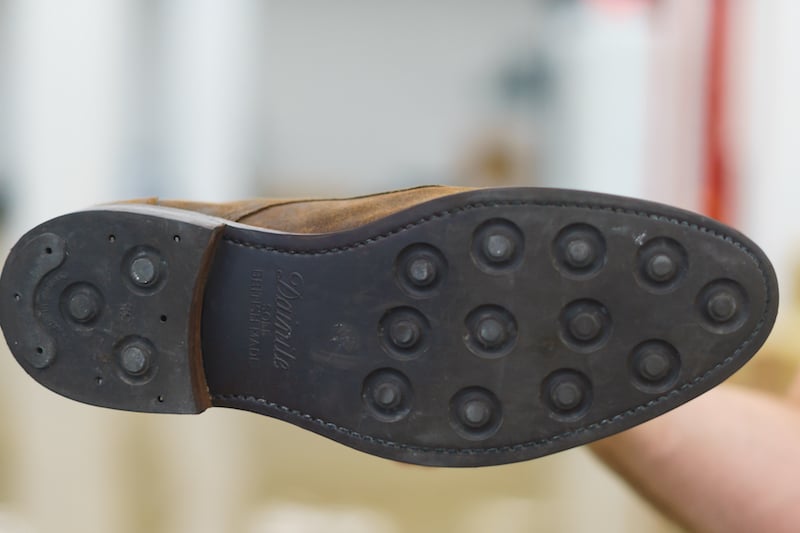
Taft Dragon Boot Sole
- Dainite outsole, rubber midsole, leather insole
- Heel has extra leather between the rubber
- No shank
- 360-degree Goodyear welt
As I mentioned above, this is a Dainite sole, a kind of rubber that’s pretty popular among high quality boots. It’s not quite as classic or traditional looking as, say, a stacked leather or oak sole, but it has a big benefit: grip. These offer really solid grip. In a lot of my other, more expensive boots, like the Frye Jones Lace Up, I found myself skittering around the streets of Manhattan whenever a little rain fell. That didn’t happen with the Dragon boots, which were practical and durable in bad weather. The difference in grip between something like Dainite and more “classic” soles is night and day, plus the Dainite sole is pretty low profile so when viewed from the side, there’s not much of a difference.
So the outsole is Dainite, then there’s a rubber midsole, then a leather insole. Note that there’s no shank, which is a little unusual for boots at this price point. Shanks are often used to provide a kind of “backbone” to the boot and add some arch support. While the Dragon has a really solid construction, it was lacking just a little bit in arch support.

That said, the heel was awesome. It has an extra layer of leather sandwiched between the two layers of rubber, which gives it some support, helps absorb shock, and just makes it feel really secure on the heel.
Then, of course, there’s the Goodyear welt — Taft’s first ever. Beloved by boot connoisseurs the world over, a Goodyear welt has two main benefits: it makes for a very water resistant boot and, more importantly, it makes it a lot easier to resole. Once the Dainite has worn through (or if you just don’t like the Dainite and want a different sole), you can take it to any cobbler and have the sole swapped out. This means Goodyear welted boots really help to extend a shoe’s lifetime, enabling it to outlive sole after sole.
It’s worth pointing out that this is also a 360-degree Goodyear welt. A lot of guys prefer 270-degree welts, like the Alden Indy, because they have a slimmer silhouette around the heel. That’s not the case with the Dragon boot but fortunately, it’s still a pretty subtle welt. The Indy, for an example, has a welt that extends almost a centimeter around the perimeter of the vamp and I wouldn’t love the way it would look with a 360-degree welt. But the Dragon looks understated
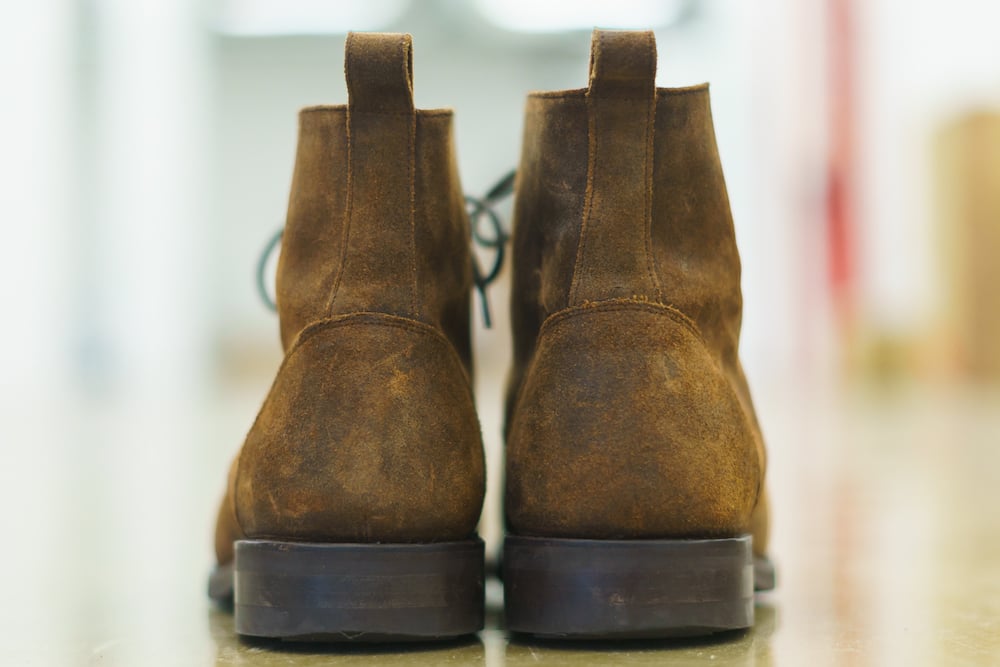
Taft Dragon Boot Fit & Sizing
- Tough to break in
- Pick a half size down from normal size
- Only one width available
As is usually the case, you want to order a half size down. I’m between an 11 and a 12 on a Brannock device, my sneakers are a 12, and just about all of my boots — Thursday, Red Wing, Wolverine, Chippewa, Viberg — are an 11.
I’m an 11D, and that D refers to my foot’s width. D is considered “normal” and here arises an important problem with the Dragon: there are no other widths available. In the world of shoe sizes there can be six widths to choose from and at the time of writing, Taft only has one with the Dragon.
This bothered me more than usual because I didn’t love the fit of this boot. Breaking them in was tough, it took several wears before they were comfortable enough to wear all day, and while the leather did stretch a centimeter or two, it still doesn’t feel great on the ball of my foot. Note that my feet are indeed an 11D, a size that has fit me very well, without any complaints, in all of the brands I mentioned above. Taft was just a tiny bit too tight and I would have liked other widths to choose from.
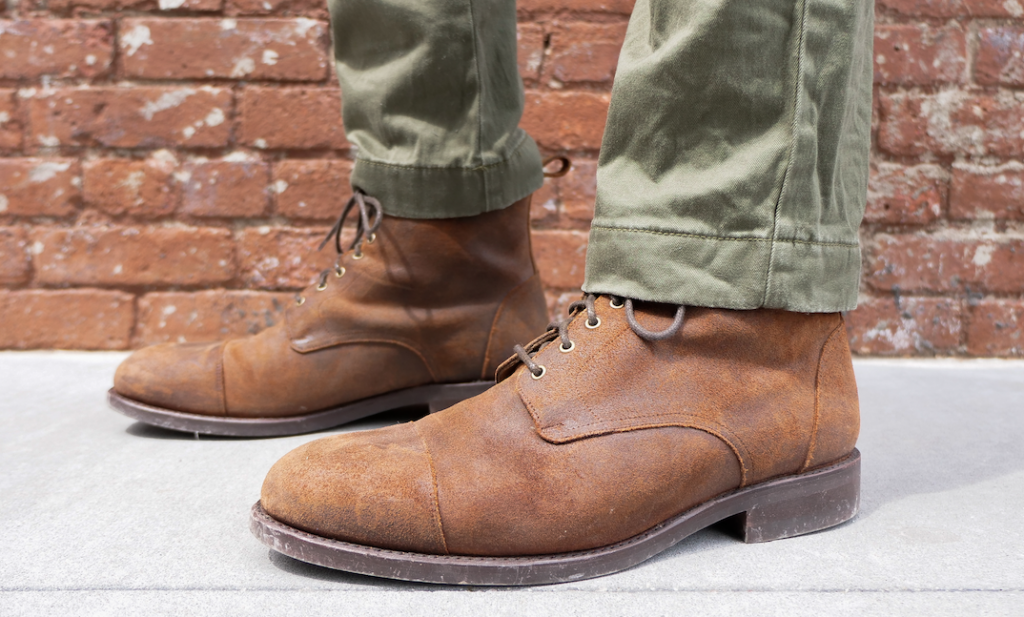
Taft Dragon Boot Price
Both the Rust and the Coffee cost $349. Like I said, this boot is Taft launching themselves into the big leagues and they’ve done the same thing with the price, valuing these shoes at about what you’d expect to pay for other well-known, mid-level, Goodyear welted boots like Red Wing and Wolverine.
The Dragon is notably more expensive than almost anything else Taft offers. (Their signature Jack boot, for example, is $250.) The materials used for the Dragon are a lot more expensive (most of the Jack boot’s upper is made from wool), but you need to remember they’re a direct to consumer brand. If they’re coming out with a Goodyear welted boot that’s intended to compete with the big companies, I think it would have been better to price the shoe more competitively. I get that they’re made in Europe, which adds to the cost, but I would have liked to see these boots closer to $300. Even then, they’d be more expensive than other high quality boots from direct to consumer companies, like Thursday Boot Company.
[Buy the Taft Dragon boot here!]
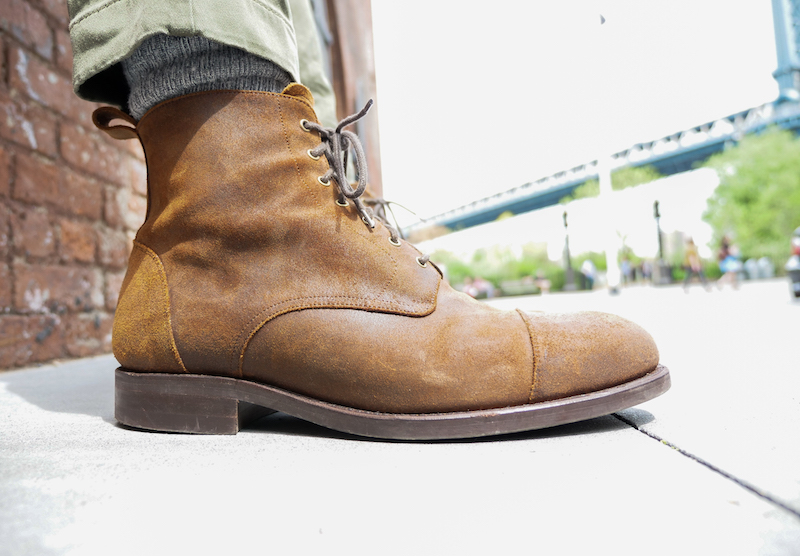
Taft Dragon Boot: To Buy or Not to Buy?
Fit is an individual thing, of course, but after lending this boot to a couple of friends who fit all of my other shoes perfectly (sure, I share boots sometimes, it’s not weird) they also agreed that this fit isn’t amazing. And sure, I would have liked them to be a little cheaper. But I can’t deny that these shoes have totally changed the way I think about suede — they look so good. The suede is durable yet fashionable, eye-catching but subtle, plus they’re waterproof and there’s that Goodyear welt that makes them extra long-lasting.
This is a direct to consumer company, so it’s extra frustrating when the fit isn’t great and you can’t try another size very easily. That, along with the price, were the biggest downsides. But these shoes look so damned good that if you can find a pair that fir you, I’d recommend them.

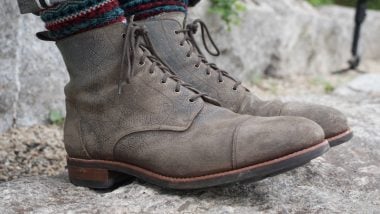
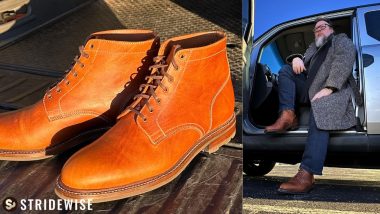
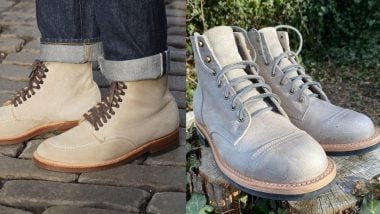
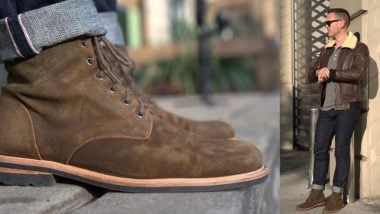


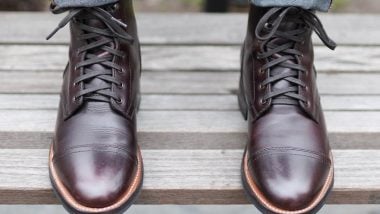
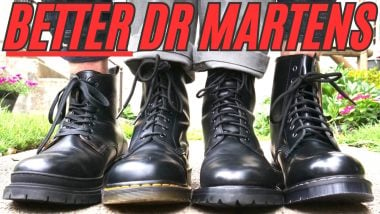

Hey Nick,
Loved the review! I have these in Midnight and have had the same experience. Love the look and grew to love the fit as I broke them in, but the break-in period was a bit tough. Worth it though. These boots have held-up all over the world!
What are your thoughts on wearing this style of boot with a suit? Do you think they’ll blend with more formal wear (e.g. a navy or charcoal gray slim cut suit)? I live in a rainy climate and would love to not skitter in a pair of leather dress shoes.
Thanks!
– Gabe
Hey Gabe, thanks for your comment, man. I don’t think this boot works with a suit to be honest, they’re just a tad too rugged. I think a lot of Taft’s blake stitche boots, like the Jack, can work well with a suit if you’re brave though!
Hi Nick,
Would you say that among all the work/dress boots in this class (ie Captains, Higgins Mills, Dowlers – generally you list of best boots at the $200-$400 price point) the Taft Dragon is the most most waterproof?
Thanks
Francis
Hey Francis, no I’d probably say the Higgins Mill or the Parkhurst boots are because they have storm welts.